Introduction
Wall-E is a beloved Pixar movie that tells the story of a lonely robot living on an abandoned Earth. The movie is known for its stunning animation, memorable characters, and powerful messages about environmentalism and consumerism. It is also one of my favorite movies, one that I have written about before. Throughout the movie, Wall-E learns about the dangers of overconsumption and the importance of taking care of our planet. In the end, he and his love interest, EVE, help to save the Earth and inspire humans to return to their home planet.
The movie opens up with Wall-e alone on an Earth devastated by years of environmental abuse by the human population. The desolation of the place, as Wall-e navigates it against a backdrop of music, is very evocative. Sure, it is a worst case scenario, but as you look at the scenes in the movie you can’t help but wonder if we will, given our current trajectory, ever cause similar devastation to our home planet.
While the entire movie has themes of environmentalism, and evokes ideas of conservation, I am particularly impressed by the ending credits. In a previous post, I talked about the art in the end credits, and how it reflects the history of art in a very creative way. In this post, I will talk more about how it reinforces themes of environmentalism and sustainability.
One of the most powerful moments in Wall-E comes during the ending credits. Unlike most movies, which use the credits to list the cast and crew, Wall-E’s ending credits are a visual feast that reinforces the movie’s themes and messages — as well as showcase the history of art on Earth. The credits show the Earth being gradually reclaimed by plant life, the return of animals and insects, and the eventual return of humans to the planet. By doing so, the ending credits support the message of environmentalism that runs throughout the movie.
In this blog post, I’ll explore how the ending credits of Wall-E support the message of environmentalism. I’ll look at how the credits show the Earth being reclaimed by nature, the importance of recycling and reusing materials, and the return of humans to Earth. By the end of the post, you’ll have a deeper appreciation for the movie’s themes and messages and a greater understanding of how they relate to our own impact on the environment. So let’s dive in and explore the environmental message of Wall-E’s ending credits.
The ending credits
In Wall-E’s ending credits, we see the Earth being gradually reclaimed by plant life, a stark contrast from the barren wasteland it had become in the movie’s opening scenes. The credits depict the gradual emergence of plant life across the planet, covering the vast expanses of concrete and metal that once defined the human-built world. As the credits roll, we see glimpses of trees, flowers, and other forms of vegetation that begin to reclaim the world from the scars of human activity.
One specific scene that stands out is a shot of a plant growing out of a discarded boot, symbolizing the resilience of nature and its ability to find a foothold even in the most unlikely of places.
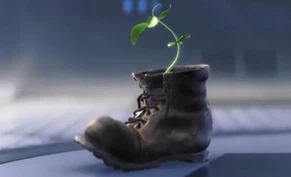
This plant is an important element of the movie. Wall-e first finds in a broken down fridge, and transfers it to the book. It is one of the first signs that the Earth is recovering from the devastation wrought on it by the human population. It reinforces the message that if we give nature a chance to recover, life will always find a way.
The whole movie is based on the attempt of the protagonists to get this plant to a detector onboard the Axiom, a ship on which humans have escaped the devastation on earth. Once the plant is detected, they are able to get the ship back to earth and restart life. In the ending credits, as Wall-e and EVE stare at a large tree, the camera pans down and we see that it has grown from the seedling that was in the boot. Here is an image of the tree they are looking at.
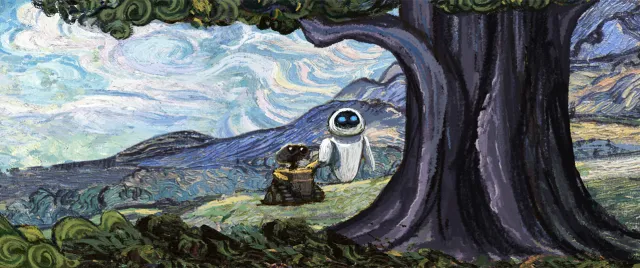
This is a powerful message of environmentalism, showing how plants can restore the earth from the devastated and desolated state it was in at the beginning of the movie. It also shows that if nature is given a chance to recover, without constantly being attacked by humans, it can restore the beauty and diversity of nature that was the original state of the planet.
The ending credits all show images of flowers and birds on the recovering earth. Here is another image from the ending credits to highlight this.
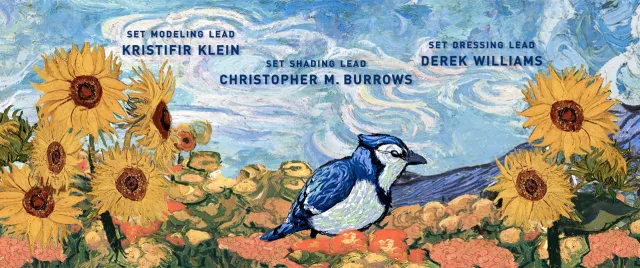
Another scene from the ending credits shows a bee taking off from a flower. Here is a screenshot of this scene.
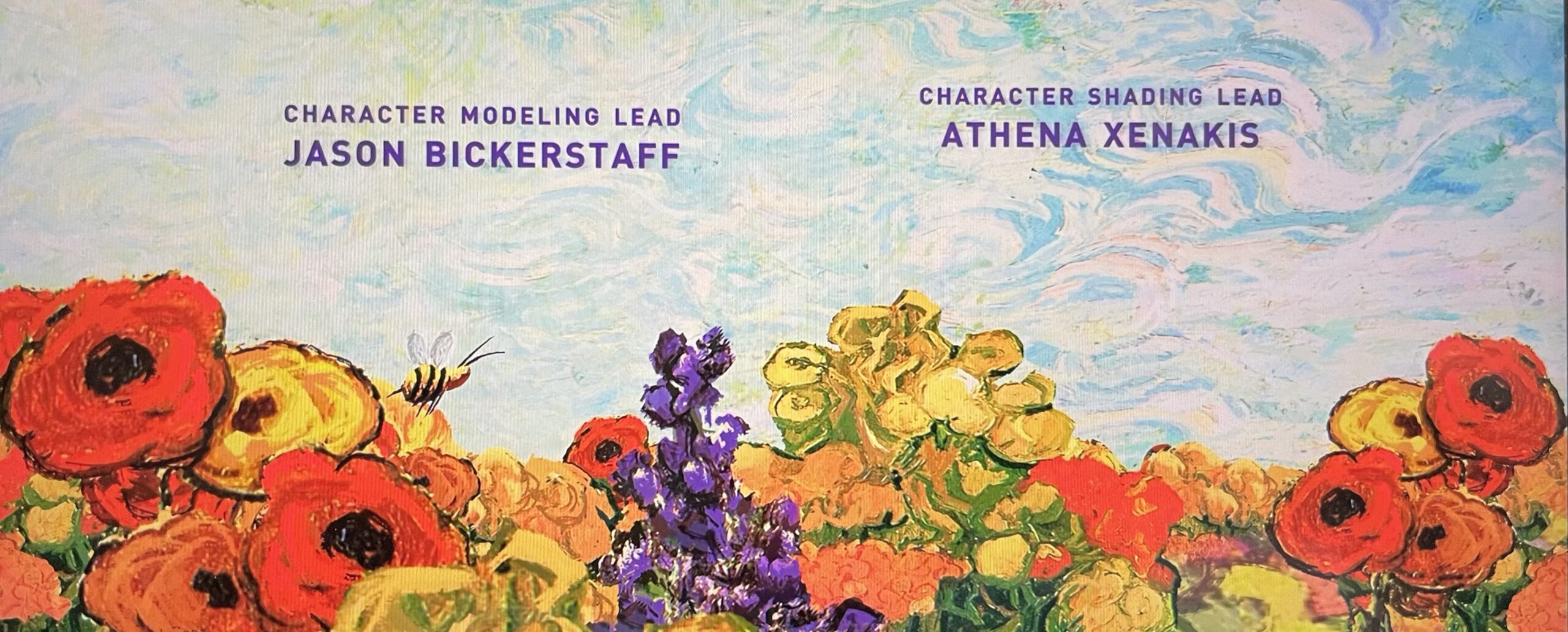
The entire ending credits show how the earth recovers from bareness to a living, thriving environment with lush plant, insect and animal life.
The ending credits of Wall-E depict a world in which nature has begun to reclaim the Earth from the damage caused by human activity. The credits show the transformation of a world that was once defined by its artificiality and pollution into a vibrant and flourishing ecosystem. By doing so, the credits support the message of environmentalism by suggesting that the Earth can heal itself if given the chance and that humans have a responsibility to take care of the planet they call home.
Sustainability
In the movie, humans had abandoned Earth due to the damage caused by human activity and had moved to the Axiom, a massive spaceship that catered to their every need. However, life on the Axiom had left them disconnected from nature, and they had become lazy and complacent. The contrast between life on the Axiom and the thriving natural world depicted in the ending credits serves as a reminder of the importance of living sustainably and taking care of the environment.
The ending credits suggest that humans have the power to make a positive impact on the environment by making conscious choices about how they live their lives. This message is reinforced by the scene in which humans return to Earth and begin to live in harmony with the natural world. By doing so, they are able to create a thriving ecosystem that supports a diverse range of plant and animal life.
We see humans farming the land with the help of Wall-E and EVE, tending to crops and livestock. This scene suggests that humans are now living in harmony with nature, working with the land rather than against it.
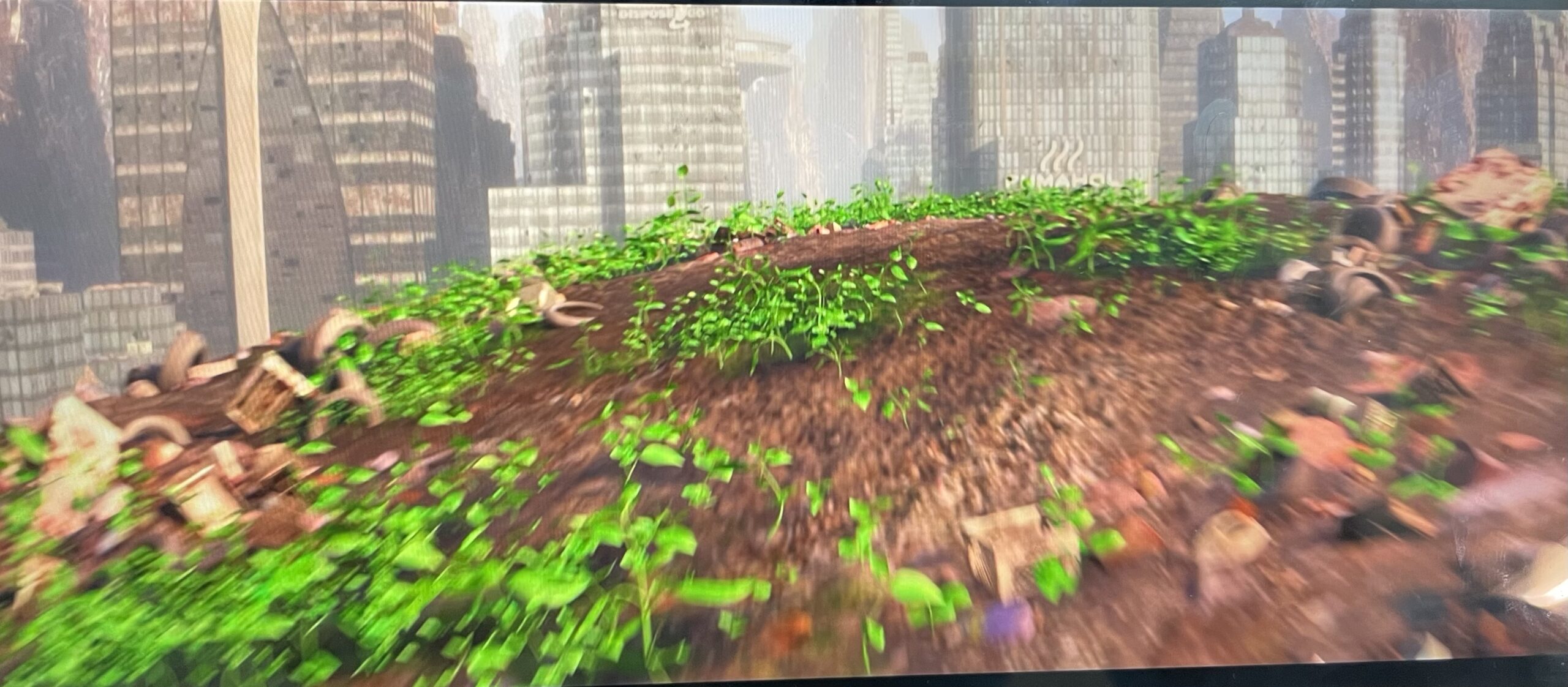
In another scene, a family is shown enjoying a picnic in a field, surrounded by wildflowers and lush green grass. This scene suggests that humans are now able to enjoy the beauty and bounty of the natural world without causing harm to the environment.
These scenes reinforce the message that humans have a responsibility to care for the Earth and live sustainably, and that by doing so, they can create a harmonious relationship with the natural world. The contrast between these scenes and the earlier scenes in the movie, in which Earth is a barren wasteland and humans are disconnected from nature, highlights the importance of taking action to protect the environment and live in harmony with the planet.
There are many other scenes in the movies and ending credits, the entire movie is a lovable parable about environmentalism and sustainability — the love story between Wall-e and EVE just make the story better. I strongly advise you to watch this movie with your family, it is one of the pleasures that I never get tired of.





1 Comment